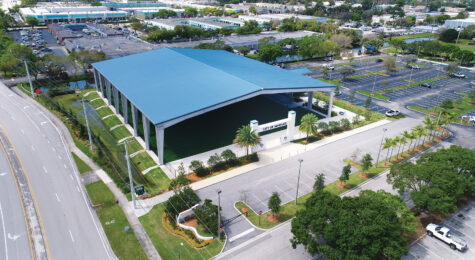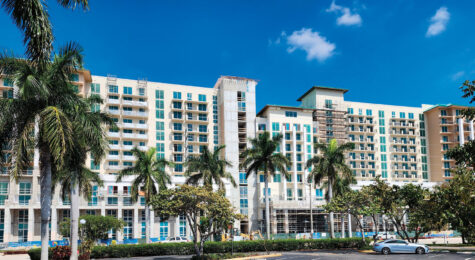Celebrate the Latino Culture in Fort Lauderdale
Lively music and dancing, extraordinary art exhibits, and magnificent murals can be found throughout this stunning South Florida region.
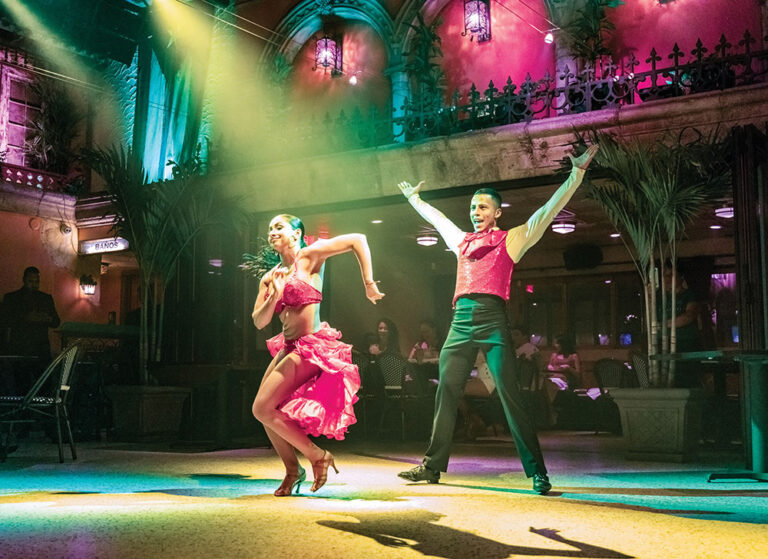
If you spend any time exploring art in Broward County, you’ll notice its vibrant diversity, thanks in large part to the influence of Latin American cultures. The region has one of the country’s highest concentrations of Hispanic and Latino communities, and locals draw on their heritage to share art that enriches life for everyone. Here’s how you can celebrate the Latino culture in Fort Lauderdale, FL.
In This Article
Find the Right Rhythm
If Greater Fort Lauderdale had a soundtrack, it would probably be salsa. Something about the up-tempo beat, the quick, cheerful percussion is right at home with swaying palm trees and sunshine.
Certainly, both the music and dance flourish here. Hundreds of dancers of all skill levels gather the first Saturday of the month at the VK Dance Arena in Hallandale Beach for the Born to Salsa Social. On weekends at Cuba Libre, a restaurant and rum bar on Las Olas Boulevard in Fort Lauderdale, salsa performances are part of dinner. Meanwhile, the hottest salsa party in South Florida convenes monthly at the Sunset Club atop the Costa Hollywood Beach Resort, complete with a DJ and rooftop pool.
For Latino music, you can catch vocalists and musicians at the Broward Center for the Performing Arts or Tin Roof in Fort Lauderdale. True enthusiasts can’t miss Salsa Fest, the region’s largest salsa festival, drawing over 10,000 visitors to Hollywood every April.
“For me, salsa music is life, and it represents happiness, love for culture, being Latina and Puerto Rican,” says Melina Almodovar, the event’s co-founder. “I feel there are many opportunities in the area to experience and enjoy Latin culture. I am proud to live here.”
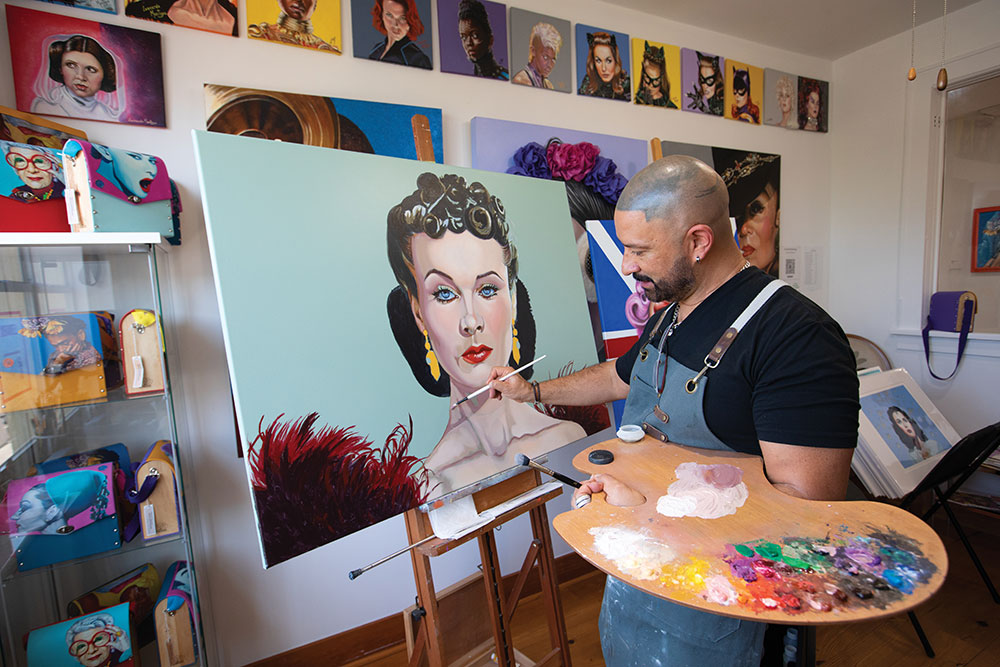
Explore Extraordinary Exhibits
A wealth of varied artwork by Latina/Latino and Hispanic artists fills the region’s museums and galleries. The NSU Art Museum houses the Stanley and Pearl Goodman Collection of Latin American Art, where modernist paintings by Joaquín Torres-Garcia and Frida Kahlo hang.
Other institutions offer rotating exhibits, like The Frank C. Ortis Art Gallery in Pembroke Pines, which hosted a bilingual book fair last year, and ArtServe, whose “Narratives in Latin-American Art” – a collection of stories from Chile, Aruba, Haiti and more – was showcased during Hispanic Heritage Month.
“I know from personal experience that in our community, there’s always Latin culture involved in most of the art events,” says Leonardo Montoya, a mixed-media artist born in Colombia who was part of History Fort Lauderdale’s recent “Viva Fort Lauderdale” fine art exhibit.
“Art truly has the power to shift our collective consciousness to catalyze growth and understanding,” Montoya says. “So, in times like now, where we are talking about inclusion, representation and equality, our community has a lot to offer. It’s undeniable our influence in the region, and I’m sure it will only get better in time.”
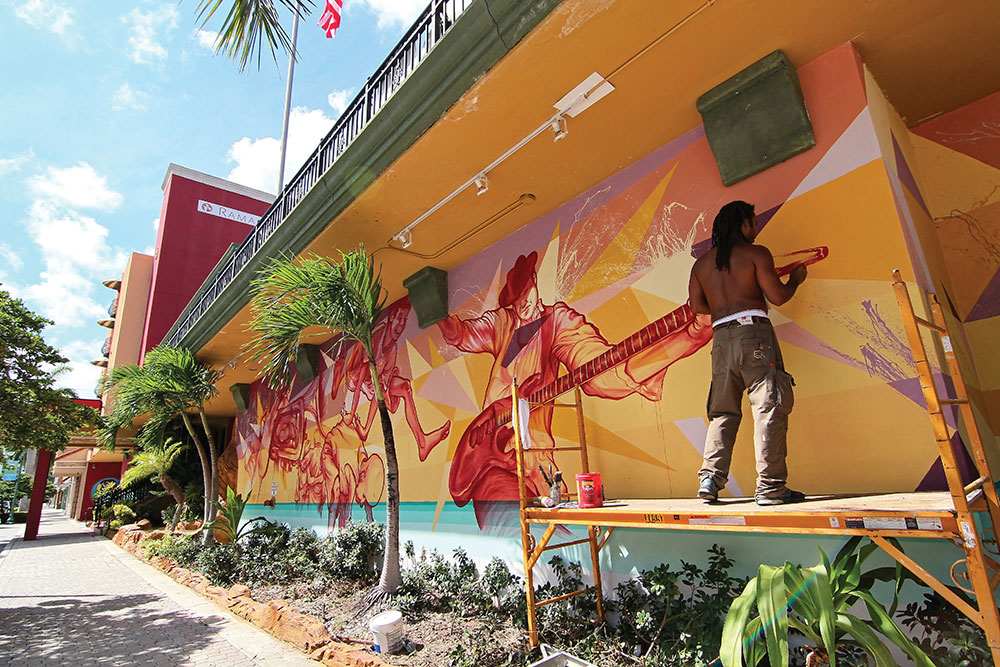
Discover Great Art Outdoors
Beyond the galleries and performance halls, art overflows into parks, streets and other public spaces. Outside the Broward County Library in Davie, families play by 10-foot-high I LOVE YOU letters made by a couple from Argentina. At Fort Lauderdale’s main library, the sculpture of a sailboat, inspired by Hispanic culture and created by artists from Ecuador and Mexico, catches the sunlight in its multicolored glass sail.
And most passengers at Port Everglades don’t know that the mosaics guiding them from ticketing to the ships are handcrafted by a Cuban American artist. Yet another Cuban American, Ernesto Maranje, conceived Fort Lauderdale’s first multisensory mural, accessible to all through a blend of sight, sound, touch and smell on the Mockingbird Trail.
But no place has quite as much outdoor art by Latin artists as the Downtown Hollywood Mural Project.
Of the 30-plus contemporary murals, about half are by Latin artists, and most of those feature local flora and fauna similar to that of the Caribbean and South America, says Jill Weisberg, the Hollywood Community Redevelopment Agency’s art and culture coordinator, who curates the project.
“We are steeped in the culture of the Caribbean and South America and the islands, and I love it.”
Jill Weisberg, Hollywood Community Redevelopment Agency
“There’s a lot of crossover,” she says. “(Artist) GRABSTER loves birds because he was born in Brazil. Then he moved and painted the blue heron here. Nicole Salcedo’s mural is a line drawing of plants influenced by the ones here but also her family’s heritage.”
The mural project covers streets spanning from 17th to 21st avenues. GRABSTER’s mural is on 20th Avenue, and just a couple of blocks down near ArtsPark at Young Circle, Nicole Salcedo’s work decorates a building on Harrison Street.
Weisberg says the region is fortunate to have such a rich cultural influence from Hispanic and Latin American communities, which offer something for everyone.
“We are steeped in the culture of the Caribbean and South America and the islands, and I love it,” she says. “You can explore it if it’s not your culture. If it is your culture, it’s like home.”
Artists in Residence Returns
After a hiatus due to the pandemic, the Artists in Residence (AiR) program is back at the historic Bailey Contemporary Arts Center (BaCA) in Pompano Beach’s Old Town neighborhood.
The City of Pompano Beach Cultural Affairs Department took the opportunity to revamp the AiR program with a new format to help promote the talent of artists and Pompano Beach.
“Seeing the community’s response to this newly relaunched program has been incredibly inspiring,” says Laura Atria, the city’s public art and AiR program manager. “The artists are all so unique in not only style, but medium. We have painters, ceramicists, mosaic artists and a dancer in this first graduating class. Watching them work together and inspire each other has been a thing of beauty.”
The program started in 2014 as an incubator for artistic innovation and education. BaCA draws people looking to enhance artistic skills or appreciation via events, tours and workshops, and has exhibited the works of hundreds of local, national and international artists.
Boasting over 6,000 square feet of exhibition space, the second floor is the creative home of the AiR program. It has studios available 24 hours a day, plus an open area where artists can meet and collaborate. The featured Artist of the Month has a reception as part of Old Town Untapped, which attracts thousands of visitors. AiRs have access to professional development classes and will teach or perform at events and create event proposals to be used post-residency.
“We like to think we create a dynamic environment through the AiR Program — one that appeals to onlookers and attracts locals and visitors alike who can watch the creative process unfold and see the latest output,” Atria says. “The feedback from the community has been fantastic. The public has been extremely supportive and enthusiastic about the AiR program.”
– Writer Rebecca Treon contributed to this article.
Get to Know Fort Lauderdale
Want to learn more about living and working in Fort Lauderdale, FL? Check out the latest edition of Livability Greater Fort Lauderdale, Florida.


